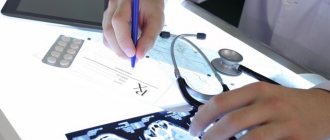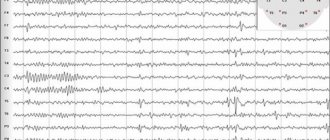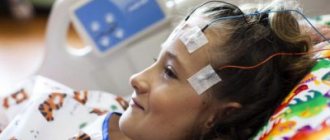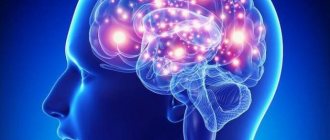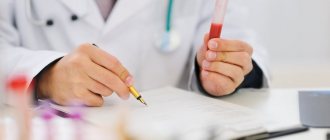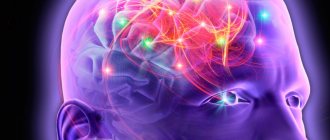Why is there a ban?
In most cases, epilepsy significantly limits the ability to drive. While driving, a person must have 100% control of the body, and also immediately make maneuvers if the situation on the road requires it. The disease does not allow these requirements to be fully realized. And this is due to seizures that occur with epilepsy.
An acute, albeit short-term, disruption of brain function occurs, which is why an adult usually falls into an unconscious state (with generalized attacks). The long course of the disease leads to the development of mental disorders and abnormalities , which can result in a nervous breakdown and other circumstances undesirable for the road.
A person cannot obtain a driver's license also because during seizures he does not control his physical state: convulsions develop, legs and arms move voluntarily. Some patients experience severe dizziness and even hallucinations. During an attack, vision and hearing deteriorate greatly, the person seems to fall into a pool, not understanding what is happening around.
Due to an epileptic seizure, the patient's condition leads to an emergency situation on the road. This is fraught with consequences such as the death of other people or their disability.
If for people who drive passenger vehicles, exceptions regarding obtaining a driver's license are applicable, then for drivers of buses and other large vehicles for transporting people, this is not the case.
There are quite a lot of factors that allow one to obtain rights for epilepsy.
Exceptions allowing driving
For the second group of drivers (category D), there is a strict ban on obtaining a driver's license if you have epilepsy. There are broad exceptions for category A, B and C drivers:
- the patient undergoes constant medical monitoring, and it is officially established that there have been no attacks for more than 5 years;
- a regular medical certificate is valid for 2 years for drivers; if the patient has epilepsy, the regularity of re-examination is prescribed by the doctor;
- the neurologist issues a conclusion on the suitability of the potential driver to drive a vehicle with epilepsy;
- more than 6 months must have passed since the last attack without additional symptoms of epilepsy during this period;
- it must be medically determined that epilepsy cannot cause a seizure while driving;
- It is also considered an indication that attacks can occur, but only in sleep;
- the patient does not experience loss of consciousness or acute limitation of motor functions during an epileptic seizure;
- the factors causing epilepsy were surgically eliminated;
- After stopping the drugs, there was a relapse, but the driver resumed treatment.
In the latter case, the person is banned from driving for 3 months.
Only 3 factors allow you to obtain a license for category D epilepsy, and the most important of them is the absence of seizures for 10 years.
The absence of drug treatment is also considered an important condition for this . That is, it is necessary to confirm that anticonvulsants were not taken during remission.
An indication may also be that attacks occur solely due to provoking factors, and driving or nervous tension associated with it are not included in this risk group. Also, a driver can get a license if a seizure has occurred only once in the last 5 years.
The decision on admission to driving is made by the attending physician, and in some cases a consultation is held.
Each case is considered individually. If a permit is issued, the person is required to carry with him at all times a medical certificate confirming his fitness to drive. The medical commission has the right to determine which category the patient will receive.
Features of the law restricting the right
There is a whole list of diseases that serve as a contraindication to obtaining a driver's license. A person with epilepsy should also become familiar with them, since concomitant disorders can completely prohibit driving:
- partial but severe loss of hearing or vision, determined by a medical commission;
- eye diseases, which may be accompanied by partial and temporary loss of vision, visual impairment, hallucinations;
- absence or temporary impairment of motor abilities of the arms or legs;
- some pathologies of the cardiovascular system;
- diseases of the endocrine system that can cause danger on the road;
- persistent alcoholism or drug addiction;
- gynecological diseases in which it is impossible to remain in a sitting position for a long time, or complications may arise right on the road.
The full list can be studied in the law, or checked with the medical commission.
If a person has received his license and is diagnosed with epilepsy in stable remission, he must be attentive to his health from now on.
Often attacks are provoked by lack of rest and strong emotions. When driving, you should not get carried away with long trips , which lead to the fact that a person sleeps 3-4 hours a day.
Obtaining a driver's license if you have epilepsy is possible, but you should be careful about your health and assess the risks. Bypassing official rules and requirements can lead to disastrous consequences on the roads.
Is it possible to get a license if you have epilepsy?
In the Russian Federation, as in many countries, obtaining a driver’s license takes place in two stages: passing an exam and issuing a medical certificate of suitability to drive a vehicle of a certain category.
It is realistic to undergo a medical examination only in accordance with Order No. 302n. It also spells out all types of diseases for which it is impossible to obtain a driver’s license.
Is epilepsy included in this list of diseases?
In the Russian Federation, people with epilepsy are legally prohibited from driving, regardless of category. But there is always a chance and exceptions to the rules.
Why are people with epilepsy prohibited from driving?
While driving a vehicle, the driver must:
- Be able to immediately perform the required maneuver;
- Fully control your body.
To reduce accidents, these health restrictions were invented.
What happens to a person during an attack:
- The normal functioning of the brain is disrupted. For some, the attack is associated with fainting;
- The physical condition of a person is disrupted, and he is unable to control his arms, legs and his body as a whole;
- Mental disorders;
- Dizziness, hallucinations;
- The function of the auditory and visual organs is impaired.
An epileptic attack can lead to an emergency on the road and lead to the death of innocent people and road users. Therefore, citizens with this disease cannot be allowed to drive a car.
Drivers are divided into two categories: those who drive passenger vehicles and those who transport people in large vehicles. The demand from drivers of the second category is stricter due to medical contraindications.
Conditions for admission to driving of the first category of persons:
- Obtaining a medical certificate every 1-2 years;
- There is a certificate from a neurologist about permission to drive;
- Six months have passed since the last relapse;
- Seizures that occur during sleep;
- Seizures without impaired motor function and without loss of consciousness;
- If the drug is discontinued, the driver does not have the right to drive for 3 months. You can renew your rights if you complete a course of medication;
- Treatment with surgery.
Conditions for admission to driving of the second category of persons:
- The last attack of epilepsy was more than 10 years ago and during this period of time he did not require drug treatment;
- Epilepsy seizures occur only in provoked situations and driving a car does not cause a negative impact on the person’s condition;
- A case of one attack that occurred more than 5 years ago.
As a result, it is possible to obtain a driver's license with epilepsy. The decision is made by the neurologist with whom you are registered. In severe cases, a council of doctors gathers to consider this issue.
A positive decision is made subject to certain conditions and restrictions, which are indicated in the driving document.
Important! In order to obtain a permit to drive a vehicle, you need a medical certificate of health that is current at the moment.
Epilepsy is a strict contraindication to obtaining a driver's license.
And each case is considered individually by a medical commission, where the selected type of transport management categories plays an important role in decision-making.
To obtain a license to drive a passenger car (work as a driver is excluded), the conditions are softer than for permission to drive other types of categories of vehicles.
Epilepsy needs to be treated, and others need to be more attentive to the category of people with this disease, because heartlessness can lead to the death of a person.
Laws restricting the receipt of a driver's license for people with epilepsy are different in each country. Currently, the risk of road accidents for people with epilepsy is much higher than for other citizens. In this regard, driving in Russia is officially prohibited for people with epilepsy.
Below is an extract from the international law on diseases limiting driving.
12. Epileptic seizures or other conditions manifested by a sudden loss of consciousness pose a serious danger, significantly increasing the risk of road accidents when they occur among motor vehicle drivers.
Epilepsy is defined as two or more epileptic seizures occurring less than 5 years ago (if less than 5 years have passed since the last seizure). A provoked epileptic seizure is a seizure caused by a known precipitating factor that can be avoided. (EN 26.8.2009 Official Journal of the European Union L 223/33.)
If the first or isolated (one-time) epileptic seizure or episode of loss of consciousness occurs, it is recommended to stop driving. It is necessary to draw up a specialist report indicating the period of restriction of rights to drive vehicles and recommendations for further observation.
In all cases, it is fundamentally important to establish the specific epileptic syndrome and the type of seizures, which allows for an adequate assessment of the safety associated with driving (including the risk of further seizures) and the prescription of adequate therapy. These measures should be carried out by a neurologist.
Epilepsy - group 1
12.1. Drivers with epilepsy driving vehicles classified as group 1 must be monitored and undergo periodic medical examinations until the duration of remission (episode-free period) reaches 5 years.
The diagnosis of epilepsy is an indication for restricting the right to drive a vehicle and requires sending a notice to the authorities responsible for issuing driver’s licenses.
12.2.
Provoked Seizures: In cases of provoked seizures associated with known precipitating factors that are not likely to occur while driving, driver license applicants may be found fit to drive on an individual basis, depending on the opinion of a neurologist (assessment should be based on other important sections of Annex III (for example, in cases of alcoholism and other related diseases).
12.3. First or single unprovoked epileptic seizure: if the first unprovoked seizure occurs, permission to drive a vehicle is given to the applicant for a driver’s license after 6 months.
attack-free period, subject to a detailed medical examination.
Legislative bodies of specific countries may allow drivers with additional factors indicating a favorable prognosis to begin driving sooner.
12.4. Episodes of loss of consciousness of other etiologies: Episodes of loss of consciousness should be assessed depending on the existence of a risk of recurrence while driving.
12.5. Epilepsy: Drivers or driver's license applicants may be considered fit to drive after a seizure-free period of 1 year.
12.6.
Epileptic seizures occurring exclusively during sleep: Drivers or driver's license applicants who have never had an epileptic seizure other than an epileptic seizure occurring exclusively during sleep may be considered fit to drive if the seizure pattern persists for a period of time not less than the duration of the seizure-free period required to obtain a driving license for patients with epilepsy. If an epileptic seizure occurs while you are awake, the seizure-free period required to obtain a driver’s license is 1 year (see section “Epilepsy”).
12.7.
Epileptic seizures that do not affect consciousness and motor activity: applicants for a driver's license or drivers who have never had an epileptic seizure, other than seizures that do not lead to impairment of consciousness and do not cause functional impairment, may be considered fit to drive a car if the seizure the pattern persists for a period of time no less than the duration of the seizure-free period required to obtain a driving license for patients with epilepsy. If an epileptic seizure of any other type occurs, the duration of the seizure-free period required to obtain a driver's license is 1 year (see section “Epilepsy”).
12.8. Epileptic seizures that occurred against the background of changes in therapy and provoked by a decrease in doses of antiepileptic drugs: the patient is recommended to stop driving for the period of discontinuation of antiepileptic therapy and for 6 months.
after stopping treatment. Epileptic seizures that occur due to a change or discontinuation of antiepileptic therapy prescribed by a doctor require abstinence from driving for 3 months. subject to resumption of previous, previously effective therapy.
12.9. After surgical treatment of epilepsy: see section “Epilepsy”.
Epilepsy - group 2
12.10. The driver's license applicant must be in remission for the required duration without taking antiepileptic drugs. Regular medical examination and monitoring is necessary.
Required criteria identified by neurological examination: absence of serious brain damage and absence of epileptiform activity on the electroencephalogram (EEG). After the occurrence of an acute episode, an EEG and a detailed neurological examination are necessary.
(EN L 223/34 Official Journal of the European Union 26.8.2009)
12.11.
Provoked Seizures: In the event of provoked seizures associated with known precipitating factors that are not likely to occur while driving, driver license applicants may be found fit to drive on an individual basis, based on the opinion of a neurologist. After the occurrence of an acute episode, an EEG and a detailed neurological examination are necessary.
If a structural brain disorder associated with an increased risk of epileptic seizures is detected, drivers are not permitted to drive vehicles classified as Category 2 until the risk of epilepsy is reduced to ≤ 2% per year. The assessment should be carried out taking into account other relevant sections of Annex III I (eg in cases of alcohol consumption).
12.12.
First or single unprovoked epileptic seizure: upon the occurrence of the first unprovoked seizure, permission to drive vehicles is given after 5 years of an attack-free period without antiepileptic therapy, subject to a detailed neurological examination. Legislators in specific countries may allow drivers with factors that indicate a favorable prognosis to begin driving sooner.
12.13. Episodes of loss of consciousness of other etiologies: Episodes of loss of consciousness should be assessed depending on the existence of a risk of recurrence while driving. The risk of relapse should be ≤ 2% per year.
12.14. Epilepsy: remission lasting 10 years without taking antiepileptic drugs is required. Legislators in specific countries may allow drivers with factors that indicate a favorable prognosis to begin driving sooner. The latter also applies to cases of “juvenile epilepsy”.
Source: https://jepilepsija.ru/epilepsiya/44-epilepsiya-i-avtomobil-mozhno-li-poluchit-prava-pri-epilepsii
Deprivation of a driver's license: why people will be deprived of their license in 2021
There are several serious violations of traffic rules, for which a court decision can deprive the violator of his driver's license.
Those motorists who do not commit serious offenses on the road need not be afraid of deprivation. Exceeding a couple of tens of kilometers per hour, parking on the lawn, or failing to let a pedestrian pass at a crossing are not grounds for taking away your driver’s license.
Let's figure out why a driver's license can be taken away in 2021, and for how long the court can decide to deprive a driver's license.
Deprivation of rights for up to three months
For different violations in 2021, different periods of deprivation of driving license are provided. The mildest punishment is deprivation of rights for a period of one to three months. This kind of deprivation is the most difficult to “earn”, since it is provided for very rare violations:
- driving without license plates or hiding license plates;
- refusal to give way to a car with special lights on;
- repeated driving of a vehicle that is not registered with the traffic police.
Previously, many car enthusiasts installed frames on their cars that covered or reversed the license plate. This was done in order to protect against all-seeing speed cameras or lane control cameras. When the road inspection revealed a sharp increase in the number of motorists hiding license plates, an initiative arose to introduce deprivation of rights for such a violation.
You can also “arrive” for a deprivation of one to three months without giving way to a car with blue or red-blue flashing lights. These are ambulances, intensive care vehicles or police vehicles. Less common in the capitals are official Mercedes with a “blue bucket”; they are also considered cars with a special signal.
Also read: Traffic controller signals in simple language
Deprivation of rights from three to six months
Drivers may be deprived of their license for six months in 2021 for more serious violations, many of which create emergency situations and threaten the lives of road users.
There are more such violations than those listed for imprisonment from one to three months:
- violation of the rules for crossing a railway crossing;
- speeding by 60 kilometers per hour;
- driving in the oncoming lane;
- driving on a one-way road against traffic;
- two red light runs;
- speeding by more than 80 kilometers per hour (six months imprisonment).
Ignoring traffic lights or sound signals at a railway crossing, as well as stopping for no reason on the rails, lead to consequences in the form of deprivation of rights for up to six months.
To the delight of high-speed riders, traffic police inspectors have recently stopped using speed measuring radars. Deprivation of rights for excess will be legal if the resolution was issued by an inspector; a stationary control camera can only fine you 5 thousand rubles.
Any “oncoming traffic” will also result in either a warning and a fine of 5 thousand rubles, which is decided in court, or deprivation of rights for a repeated violation. The situation is the same with repeat running a red light: for the first case, a fine of 1000 rubles will be issued, for the second - a fine of 5 thousand or deprivation of rights for six months.
How to cure alcoholic epilepsy
Seizures and alcoholism are treated with anticonvulsants and sedatives. But drugs are just as toxic substances. Therefore, medications can only help at the first stage - stop drinking alcohol. And for this you definitely need medical supervision. We strongly do not recommend drug treatment of alcoholic epilepsy at home. Even if some medications helped your neighbor or relative, they may be harmful in your situation. And after the person has received the help of a doctor, refer him to rehabilitation.
Under the new law, what diseases are prohibited from driving in 2021?
HOME / Society News Zoya Zharkova, Published January 30, 2020, 7:00
Moscow, 08/27/2020, 19:30:26, FTimes.ru editorial office, author Zoya Zharkova.
Any person who gets behind the wheel of a car must remember that he is responsible not only for his own life and the lives of the passengers in the cabin of his car, but also for the safety of those who meet him on the road.
Often the cause of accidents on the roads is the health of the driver - many drivers hide illnesses when undergoing a medical examination, and for some they appear after the examination. In this regard, in 2021, the State Duma introduced amendments to the law “On Vehicle Safety”; they began to take effect on January 1, 2020.
On August 3, 2021, in accordance with paragraph 4 of Article 23.1 of the Federal Law “On Road Safety,” the Government of the Russian Federation decided to approve a list of medical contraindications for driving a vehicle, a list of medical indications for driving a vehicle and a list of medical restrictions for driving a vehicle.
The State Duma introduced amendments to the law “On Vehicle Safety”
The Russian State Duma has made certain amendments to the law “On Vehicle Safety”. Its main rules can be found in Art. No. 23 Federal Law. Previously, this law did not list in sufficient detail the diseases for which driving is prohibited. The amendments are effective from January 1, 2021. They discuss in which pathologies you cannot drive a car, and in which you can.
- The amendments are based on the ICD-10 standard. Based on this standard, there are three classes of pathologies that are taken into account when determining the competence to drive vehicles:
- a complete ban on driving.
- These are the main pathologies in which those who get behind the wheel endanger the lives of themselves and others. These are diseases such as mental problems;
- special health conditions.
- This includes conditions where someone who takes all precautions is allowed to drive a car. This includes, for example, pathologies of the musculoskeletal system;
- restriction of machine control.
- This class of diseases concerns the operation of machines of only certain categories.
No one has repealed Article No. 2.7 of the “Road Rules”; it also introduces restrictions on driving vehicles. According to this law, painful conditions and fatigue are contraindications for driving.
For which diseases you cannot drive a car from January 1, 2020
To drive a vehicle, it is not enough just to successfully pass the traffic police exams. Before a candidate is admitted to them, he needs to undergo a medical examination, the results of which are designed to determine whether the potential driver can even drive a car.
In order not to waste time and money on learning to drive, you need to know in advance what medical restrictions exist when obtaining a driver's license.
Article 14b of Federal Law-196 establishes the impossibility of obtaining a driver’s license for those who have been diagnosed with mental disorders resulting from organic brain damage. According to the law, persons suffering from these diseases cannot be allowed to engage in activities related to the operation of high-energy vehicles such as a car or train.
In turn, Article 17b in some cases allows you to obtain a driver’s license, since it is associated with mental disorders with a short-term course. For example, neurotic, caused by stress or having a psychosomatic basis.
There is no chance for a schizophrenic or a patient registered at a psychoneurological dispensary to get a driver’s license.
Epilepsy
This disease belongs to the category of psychoneurological. Its main symptom is unexpected seizures that occur as a result of stimulation of one or several areas of the brain. At such moments, a person cannot control his thoughts, actions and feelings.
Do they give a disability group?
If there are factors limiting life activity, a patient with epilepsy is given disability. Disability due to epilepsy in adults is confirmed in the presence of the following factors:
- one of these factors is the presence of epileptic seizures. Frequent repetition of epileptic seizures leads to limitation of the patient’s life activity; an attack can begin at any time and anywhere - in transport, at work, while driving down the street. As a result, the patient’s quality of life decreases - he is forced to constantly take medications for epilepsy, which have side effects and are quite expensive, be constantly observed by a neurologist, be examined by a psychiatrist after a certain period of time, and periodically undergo a full examination;
- epilepsy may be accompanied by a change in the patient’s character and personal qualities for the worse, and the appearance of behavioral disorders. Personality changes associated with mental disorders also relate to factors limiting the patient’s life activity and serve as the basis for registration of disability due to epilepsy;
- epilepsy may be accompanied by paralysis, paresis, and other motor disorders that significantly limit the patient’s life activities;
- epilepsy can be combined with visual and hearing impairment, which is also a factor in limiting life activity.
Doctors are often asked the question: “Is disability given for symptomatic focal epilepsy? Is it possible for a child to get a disability with cryptogenic epilepsy?” Such issues are resolved by medical and social expertise. ITU considers documents confirming the severity of the patient’s condition, the inability to care for himself or the limited ability to self-care, the severity and frequency of the patient’s attacks, and mental state disorders. Based on the results of the examination and an extract about the course of the disease, experts establish the fact of disability.
The list of diseases with which you cannot obtain a driver's license has been clarified
Traffic cops have been waiting for this list, valid since January 6, for quite a long time. Although in the end they only need a certificate: pass or fail. The driver's ability to drive a car is determined by a medical commission. Based on the collected data, it determines the possibility of granting such a right to the applicant or not granting it.
You can get your license back only after passing the exam.
The list of restrictions is still simple. However, some nuances crept into it. For example, people with mental retardation should not drive a car.
It doesn’t matter that this category also includes those who cannot add 2+2, as well as those who cannot distinguish right from left.
The concept of mental retardation from a medical point of view includes a very wide range of mental abnormalities - from banal depression to inadequate perception of reality.
It must be said that categorical prohibitions apply only to diseases established by the international classification of diseases - ICD. The latest version of the ICD was released under number 10.
You can understand why people suffering from epilepsy should not drive; this disease is designated by qualification G40. Any attack will be fraught with an accident. One can understand why those who suffer from mental illness due to the use of various substances should not drive.
Those who suffer from any kind of depression or impulses should not drive, if this is confirmed by a medical report. Psychiatrists call this mood disorders (affective disorders).
The old medical requirements simply did not contain most of these medical prohibitions. And now there is.
But the most interesting thing is the ban on driving vehicles for those with a disease code corresponding to F60 - F69 - personality and behavior disorders in adulthood, including so-called sexual anomalies.
The State Duma proposed taking away cars from drunk drivers
Why patients should not drive a car
When driving a car, a person must be able to:
- make the right decisions instantly;
- control your body perfectly.
To reduce the number of road accidents, medical restrictions were introduced.
During an epileptic seizure in a person:
- brain function is disrupted. Some attacks are even accompanied by loss of consciousness;
- the functioning of the musculoskeletal system is disrupted. A person cannot independently control his arms, legs and other parts of the body. Spasms of various muscle groups often occur;
- mental disorders occur;
- Dizziness may occur. Some patients often experience hallucinations;
- the functioning of the organs of vision and hearing is impaired.
All these temporary disorders can lead to an emergency situation and death of surrounding people. Therefore, permission to drive for this category of citizens is limited.
The attending physician is obliged to report the detection of signs of epilepsy to the State Traffic Inspectorate for the purpose of temporarily restricting the right to drive.
Changes in driving license exams in 2021 are described in the article:
driving license test
.
At what age do you get a driver's license in Russia? Read here.
Is it possible to get a driver's license with epilepsy?
According to the rules established not only in our country, but throughout the world, it is impossible to obtain a license for epilepsy.
True, in these rules, as in many others, there are exceptions that in some cases allow people suffering from a similar disease to drive a car.
Today we will talk about these exceptions, as well as why such a strict restriction exists for patients with epilepsy.
What kind of disease is this
Epilepsy is a serious neuropsychiatric disease characterized by brain damage and recurrent seizures (“fits”). During such seizures, the patient is not aware of what is happening, cannot control his actions, individual movements, and may also temporarily lose auditory or visual perception of the world.
The cause of this disease can be either heredity or physical trauma to the brain. It is worth noting that the disease itself is still little studied and experts can name its exact cause only in 20% of cases.
Another important point is that the sick person cannot help himself and is in dire need of outside help. Often, in the absence of this help, seizures can be fatal.
For these reasons, for patients with epilepsy, serious restrictions are legally established not only on driving, but also on permissible types of activities.
The list of restrictions includes:
- work at height;
- professional sports;
- work with electrical installations and power lines;
- work with units under high pressure;
- work in positions requiring the handling of weapons;
- practicing medicine;
- work in the food industry;
- teaching and educational activities.
True, an established diagnosis is not a lifelong ban, and in some cases these restrictions can be lifted (we will discuss this below).
Why patients should not drive a car
Since driving is a rather dangerous activity that can endanger not only the health and life of the motorist, but also the lives of others, a number of requirements are imposed on drivers.
They must have a quick reaction, adequately perceive the situation, make decisions instantly, have good vision and hearing, and also have full control over the functioning of their limbs. During an epileptic seizure, a person cannot fulfill any of these conditions, and in the worst case, he may even lose consciousness.
Based on the fact that such conditions are extremely dangerous and can lead to numerous victims in a few seconds, there are restrictions on driving cars for such persons.
Law restricting the right to drive
In Russia, any citizen who wishes to obtain a license must undergo a medical examination. And in its activities, this commission is guided by Order of the Ministry of Health 302n dated April 12, 2011. Paragraph 27 of this order provides a complete list of diseases that prohibit obtaining rights.
What are the medical restrictions for obtaining a driver's license?
All medical restrictions imposed on persons wishing to obtain rights are indicated in the same paragraph 27 of the Order, which was mentioned above.
In addition to epilepsy itself, it contains such medical contraindications as complete loss of vision, hearing loss, alcoholism, substance abuse, drug addiction, paralysis of the limbs, certain hormonal diseases, some gynecological diseases and others.
You can most fully familiarize yourself with the list of diseases and other restrictions by studying the order itself.
Is it possible to get a license if you have epilepsy?
And so, as we have already said, it is possible to get a license with a diagnosis of epilepsy, but first it is worth saying that all epileptics who want to get a license are divided into two categories (depending on the category of vehicle).
- The first is for persons who want to drive personal transport (motorcycles and cars).
- The second is people who want to transport people (work on public transport).
The requirements for these two categories are different (for the second, for obvious reasons, they are more stringent).
To obtain permission for the first category, you need:
- Pass periodic commissions until 5 years have passed since the last seizure.
- Undergo additional examinations (if you obtain a license) according to the schedule established by the psychiatrist.
- Get a positive opinion from a neurologist.
- According to the medical commission, those wishing to obtain a license do not have the prerequisites for seizures as a result of driving a car (for example, due to the headlights of oncoming cars or loud sounds).
- At least 6 months have passed since the last seizure and, at the same time, the attacks occur exclusively in sleep.
- There must be no serious brain damage.
- During an attack, motor functions and clarity of consciousness remain normal.
- Completed a full course of treatment (including surgery, if necessary).
If an attack occurs while driving a car, the driver is suspended from driving for a period of 3 months (only if the attack was caused by discontinuation of medication and after the attack the use was resumed). Otherwise, the suspension may be for a much longer period.
To gain admission to the second category you need:
- More than 10 years have passed since the last seizure, and during this time the patient did not undergo drug treatment.
- Seizures are purely provoked, and driving is not a factor.
- Single attacks occur no more often than once every 5 years.
Removing the diagnosis of epilepsy
Complete removal of this diagnosis is quite rare, since it is not always possible to completely cure this disease, and relapses occur even after many years of calm periods.
The decision to remove the diagnosis can only be made by a full medical commission and only on the basis of long-term observation of the patient (even a single repetition of a seizure within 5 years will indicate the presence of the disease, and it will not be possible to remove the diagnosis).
EPILEPSY - GROUP 1
12.1. Drivers with epilepsy driving vehicles classified as group 1 must be monitored and undergo periodic medical examinations until the duration of remission (episode-free period) reaches 5 years.
The diagnosis of epilepsy is an indication for restricting the right to drive a vehicle and requires sending a notice to the authorities responsible for issuing driver’s licenses.
12.2. Provoked Seizures: In cases of provoked seizures associated with known precipitating factors that are not likely to occur while driving, driver license applicants may be found fit to drive on an individual basis, depending on the opinion of a neurologist (assessment should be based on other important sections of Annex III (for example, in cases of alcoholism and other related diseases).
Why they will be deprived of their rights in 2021. Violations table
Reading time: 5 min.
Most often, drivers are deprived of their license when they drive drunk, refuse a medical examination, or leave the scene of an accident. Such punishment is also possible for ordinary speeding. We have collected all the violations in one table and tell you who is deprived of their license and how, how a driver can challenge the deprivation and get his license back.
Table of contents
Drivers are deprived of their licenses for gross violations of the rules under Articles 12 of Chapter 1 of the Administrative Code. Sometimes the court may impose a more lenient alternative sentence.
| Article of the Administrative Code | Violation | How much will they be deprived? | Alternative |
| Part 1 Art. 12.8 | Drunk driving | 1.5-2 years with a fine of 30,000 rubles | |
| h 2 tbsp. 12.8 | Hand over the steering wheel to a drunk driver | 1.5-2 years with a fine of 30,000 rubles | |
| Part 1 Art. 12.26 | Refuse medical examination | 1.5-2 years with a fine of 30,000 rubles | |
| Part 3 Art. 12.27 | Drink alcohol at the scene of an accident before the police arrive | 1.5-2 years with a fine of 30,000 rubles | |
| Part 2 12.27 | Leave the scene of an accident | 1-1.5 years | |
| Part 1 Art. 12.24 | Cause minor harm to the health of a victim in an accident | 1-1.5 years | fine 2500-5000 rubles |
| h 2 tbsp. 12.24 | Cause moderate harm to the health of the victim | 1.5-2 years | fine 10,000-20,000 rubles |
| Part 4 Art. 12.15 | Exceed the speed by 60-80 km/h | 4-6 months, for repeated visits - up to a year | fine 2000-2500 rubles |
| Part 5 Art. 12.9 | Exceed the speed limit by 80 km/h or more | 6 months, for repeat – up to a year | fine 5000 rubles |
| Part 3 Article 12.12 | Drive through red again | 4-6 months | fine 5000 rubles |
| Part 4 Article 12.15 | Enter oncoming traffic or tram tracks in the opposite direction | 4-6 months, for repeat – a year | fine 5000 rubles |
| Part 3 Article 12.16 | Driving in the opposite direction on a one-way road | 4-6 months, for repeated visits - up to a year | fine 5000 rubles |
| Part 2 Art. 12.17 | Don't let a car with a flashing light pass you by | 3-12 months | fine 3000-5000 rubles |
| Part 2 Art. 12.2 | Drive without state signs or with hidden ones | 1-3 months | fine 5000 rubles |
| h 4 tbsp. 12.2 | Drive with fake signs | 6-12 months | |
| Part 1.1 Art. 12.1 | Repeatedly drive an unregistered car | 1-3 months | fine 5000 rubles |
| Part 1 Article 12.10 | Cross railway tracks outside a crossing, with a closed barrier or on a red light | 3-6 months, for repeat – a year | fine 1000 rubles |
| Part 3 Art. 12.5 | Drive a car with red lights on the front | 6-12 months | |
| Part 5 tbsp. 12.5 | It is illegal to use flashing lights | 1.5-2 years | |
| Part 6 tbsp. 12.5 | Drive a car with a fake emergency services livery | 1-1.5 years | |
| Part 5 Art. 12.23 | Transporting children at night in violation of the rules | 4-6 months | fine 5000 rubles |
| Art. 12.21.1 | Transport oversized cargo | up to 6 months | fine up to 10,000 rubles |
| Part 1 Art. 12.21.2 | Transport dangerous goods with violations | 4-6 months | fine 2000-2500 rubles |
If a driver has debts on fines and alimony of more than 10,000 rubles, bailiffs have the right to restrict his right to drive a car. If the driver continues to drive a car with a license that was suspended by the bailiff, he will be subject to suspension.
Only a court can deprive a driver of a driver’s license, the exception being when bailiffs suspend them for debts.
The traffic police inspector only removes the motorist from driving - the car is taken to the impound lot. Such a measure is possible in case of drunk driving, if the car is not registered or is faulty. In other cases, the inspector only records the violation.
The inspector draws up a protocol. A traffic police officer stops the driver and enters the data into the administrative violation report:
- date and place;
- position and name of the inspector;
- information about the driver;
- data of witnesses and victims, if any;
- violation and article of the Administrative Code;
- driver's explanations.
The inspector is obliged to explain to the driver his rights. After this, the protocol is signed by the driver, the inspector himself and the witnesses. A copy of the document remains with the driver. The traffic police sends the protocol to the magistrate within three days from the date of the protocol.
The judge makes a decision. The case is being considered by the court of the district where the driver violated the law. The driver has the right to file a petition to have the case transferred to the court at his place of residence. He can participate in the process, or ignore it - then the case will be considered in his absence.
The judge makes a decision immediately after the hearing and prepares a ruling within 10 days. During this time, the driver has the right to appeal the decision to a higher authority.
The driver hands over his license to the traffic police. If the driver does not challenge the decision or the higher authority leaves the decision in force, he must independently submit his license to the traffic police within three days.
Pass the exam. To get your license back, the driver passes a theoretical exam on knowledge of the rules of the road. According to the rules, this can be done as soon as half the period of deprivation of rights has passed. You can sign up for the exam at the Interdistrict Registration and Examination Department (MREO) of the State Traffic Safety Inspectorate, do not forget your passport.
Pay fines. The license will not be returned if the driver has at least one outstanding fine. Check whether you have debts on the main page of the “Staff Traffic Police Fines”; to do this, you just need to know the car number and vehicle registration certificate.
If you are deprived of it for drunk driving, get a medical certificate. The driver is required to undergo a medical examination and receive a certificate for any of three violations:
- drove while drunk,
- refused a medical examination,
- drank alcohol at the scene of the accident before the police arrived.
Contact the traffic police. When the period of deprivation ends, the driver brings to the department in person:
- passport;
- medical certificate, if needed;
- a copy of the court order;
- receipt for payment of fines;
- document confirming successful passing of exams.
If the driver does not come to the traffic police to obtain a license within three years, the document is destroyed by law.
At the scene of the violation. Ask the inspector to name the article of the Code of Administrative Offenses that you violated. If you do not agree with the protocol, you have the right to write down your objections or express disagreement.
In a court. When a case is heard in court, be sure to go to hearings and try to prove innocence. Video recordings, witness statements, and notes in the protocol can be used as evidence.
It is best to hire a lawyer. If the protocol is drawn up with violations, he will see this and submit a petition to the judge to declare the document invalid.
If you keep driving. For driving a car after deprivation, you will be fined 30,000 rubles. The alternative is arrest for 15 days or compulsory work for up to 200 hours.
If you hand over the steering wheel to a violator. If you entrust driving a car to a driver whose license has been revoked, you will also be fined 30,000 rubles.
Remember
- Most often, drivers are deprived of their license when they drive drunk, refuse a medical examination, or leave the scene of an accident.
- The inspector draws up a protocol and sends it to the magistrate, who makes a decision.
- The driver has the right to disagree with the protocol and defend his rights in court.
- The driver can challenge the court decision; if the decision is not overturned, he will have to bring his license to the traffic police himself.
- To return the license, the driver passes the traffic rules theory, collects documents and contacts the traffic police.
- You cannot drive after deprivation, the fine is 30,000 rubles.
June 29, 2020
June 23, 2020
Symptoms of alcoholic epilepsy
Before an attack, a person loses appetite and sleep, feels pain in the head and muscles. One of the symptoms is hallucinations. And after the attack, the signs of syndrome o) intensify. Complex partial seizures in alcoholic epilepsy are those in which the patient’s consciousness changes, he does not react to what is happening and then does not remember anything. It is important to stop drinking alcohol under the supervision of a narcologist. And then go through a rehabilitation program. This is the only way to avoid attacks of alcoholic epilepsy. They usually happen after drinking alcohol and for its cause. Even during normal attacks (in non-alcoholics), doctors recommend not drinking at all.
Myths about epilepsy: the disease can affect every family
First, the man committed the first accident at the address: Sadovaya-Spasskaya, building 19, however, without stopping, he drove in the direction of Bolshaya Sukharevskaya Square. The car lost control and flew onto the sidewalk and hit two pedestrians. The young woman died on the spot, the young man, like the driver, was hospitalized with a head injury and a broken nose. The man was having a seizure. The question of whether the driver knew that he had a serious illness or whether he had an attack for the first time remains open.
Today, epilepsy has become not only the most common neurological disease, but has also become the third! This means that your whole life will have to change overnight - after all, most people are still extremely wary of patients with such a diagnosis and, as far as possible, try to reduce communication with them to a minimum. In addition, there are a lot of myths about epilepsy in society. For example, many consider seizures to be its main symptom, when they may not exist at all.
He takes certain pills and, according to doctors, thanks to them the disease will not develop. My question is: can my husband drive a car in this case? Public Relations Manager of the Health Department Iris Saluri answers: Let us clarify that the answer from the representative of the ministry concerns drivers of the second group, which, according to the above decree, includes drivers and applicants for driving licenses of categories D and DE and their subcategories, taxis of category B, drivers and applicants for the right to drive vehicles of category A, B and C, equipped with flashing lights, as well as driving instructors.
WATCH THE VIDEO ON THE TOPIC: The driver caused an accident during an epileptic attack

